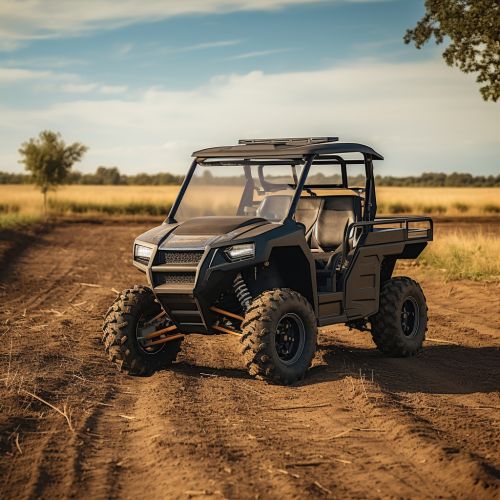All-terrain vehicle
Overview
An all-terrain vehicle (ATV), also known as a quad, quad bike, three-wheeler, or four-wheeler, is a vehicle that travels on low-pressure tires, with a seat that is straddled by the operator, along with handlebars for steering control. As the name implies, it is designed to handle a wider variety of terrain than most other vehicles.


History
The first ATVs were designed during the 1950s. The six-wheeled Amphicat was one of the first amphibious ATVs, and a small number were manufactured by Mobility Unlimited Inc of Concord, Ontario, Canada. Other early manufacturers were the Sperry-Rand Tricart. This was a three-wheeled ATV, produced from 1967 to 1969, and it was powered by a 5.5 horsepower (4.1 kW) engine and a three-speed transmission.
Design and types
There are many different designs of ATVs, with varying levels of functionality. The most common is the four-wheeled ATV, but there are also three-wheeled, six-wheeled, and eight-wheeled designs. Some ATVs are equipped with tracks, similar to those found on snowmobiles, for use in snowy conditions. Others are amphibious, capable of traversing bodies of water.
Safety
Safety has been a major issue with ATVs due to the high number of injuries and deaths associated with them. Many of these are caused by improper use or operation of the ATV, but there are also inherent risks associated with the design of the vehicle. For example, the high center of gravity and lack of a protective cage can make ATVs more prone to rollovers.
Uses
ATVs are used in a variety of settings and for a variety of purposes. They are popular for both recreational use and in certain work environments. In rural areas, ATVs are often used for tasks such as surveying, hunting, and transporting goods over rough terrain. They are also used in some military applications.
Environmental impact
The use of ATVs in sensitive environments can cause environmental damage, primarily through erosion and habitat destruction. The wide, low-pressure tires cause a large amount of soil disturbance, and in wet conditions, this can lead to deep rutting. In addition, the noise and disturbance caused by ATVs can have negative impacts on wildlife.
Legislation and regulation
In many countries, the use of ATVs is regulated by law. This can include restrictions on where they can be used, who can operate them, and what safety equipment must be used. In some areas, ATVs can only be used on designated trails or at specific times of the year.
